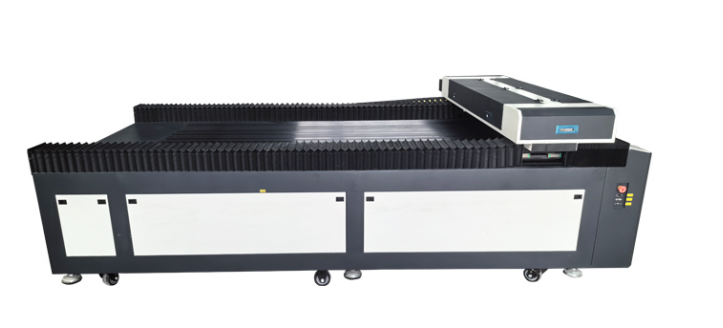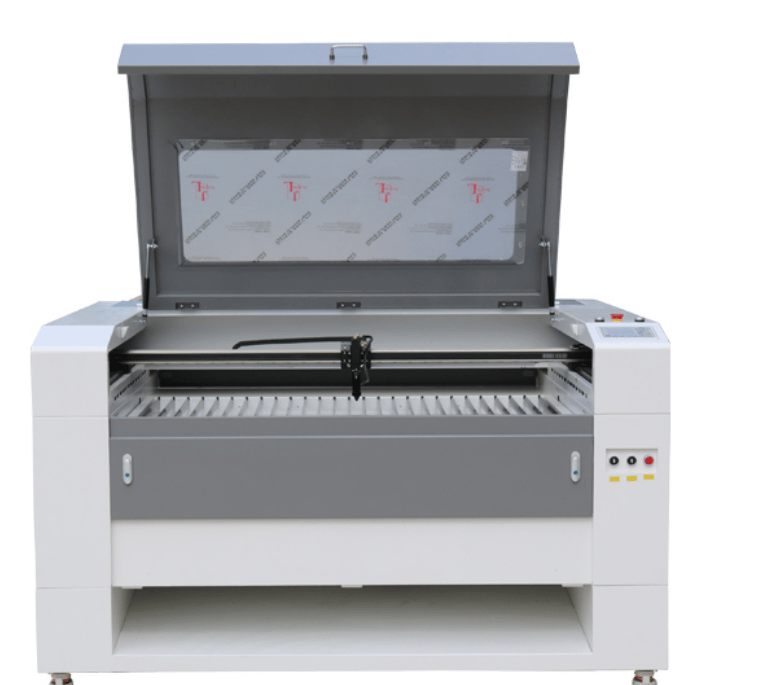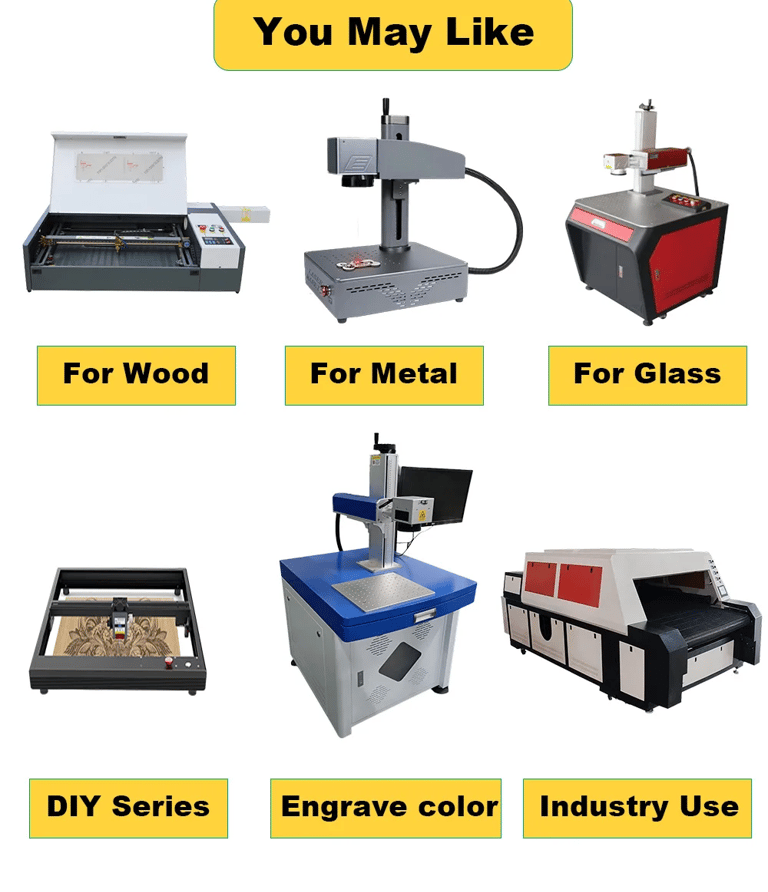Exploring Advanced CO2 Laser Features: From Automation to Efficiency
LEON MACHINERY
10/6/20236 min read


As industries continue to demand higher levels of precision and efficiency, CO2 laser machines are evolving to meet these needs. Today’s CO2 laser systems are equipped with advanced features that enhance their capabilities, making them even more versatile and user-friendly. Automation, improved software integration, and better cooling technologies have transformed these machines into powerhouses that can handle even the most complex projects with ease.
Automation: Streamlining the Laser Cutting Process
In many modern CO2 laser systems, automation plays a crucial role in increasing productivity and reducing human error. Automated systems allow for faster processing times by handling tasks such as material feeding, laser alignment, and positioning. This makes laser cutting and engraving more efficient, especially in high-volume production settings.
One of the key features of automated CO2 laser machines is auto-focus technology. This ensures that the laser beam is always positioned at the optimal focal length for each material, ensuring precise and consistent results. Automated material handling systems also help businesses save time by feeding and removing materials from the machine without requiring manual intervention. This is particularly useful when working with large materials or cutting multiple pieces at once.
Additionally, some CO2 laser systems are now capable of batch processing, where multiple parts can be cut or engraved in one go. These features make it easier to scale production and reduce downtime between jobs, leading to increased efficiency and cost savings in the long run.
Software Integration: Enhancing Precision and Customization
Another area of innovation in CO2 laser technology is the integration of advanced software solutions. Laser cutting and engraving software now offer a wide range of features that help users achieve greater precision, speed, and customization.
CAD/CAM Software: Many modern CO2 laser systems come with advanced CAD/CAM (computer-aided design/computer-aided manufacturing) software that allows users to design their projects digitally. CAD software makes it possible to create complex designs, while CAM software ensures that these designs can be translated accurately into machine instructions. This integration ensures that designs are executed precisely, minimizing the chances of error.
Customizable Settings: Laser software allows users to adjust parameters such as laser power, speed, and frequency. These settings can be fine-tuned for different materials, ensuring that each job is executed with the highest level of precision. Users can store settings for different types of materials or projects, further speeding up the workflow for repeated jobs.
Remote Monitoring: Some of the more advanced systems include remote monitoring capabilities, allowing users to track machine performance in real time from a smartphone, tablet, or computer. This feature provides a significant advantage for businesses that operate multiple machines or for users who wish to ensure everything is running smoothly without needing to be physically present.
Improved Cooling Systems: Keeping Your Machine in Optimal Condition
Cooling systems are one of the most important components of a CO2 laser machine. Since lasers generate significant heat during operation, efficient cooling is crucial to maintaining consistent performance and extending the lifespan of the machine.
The introduction of high-efficiency water-cooling systems in large CO2 laser machines has significantly improved their ability to handle higher wattages and extended operation times. Water-cooled systems ensure that the laser tube maintains an optimal temperature, preventing overheating and ensuring consistent laser output. For extremely high-powered lasers, chilled water cooling has become the norm. These systems use a refrigeration cycle to cool the water, which in turn cools the laser tube, ensuring that even the most demanding jobs can be completed without interruption.
Additionally, newer models also include integrated cooling sensors that monitor the temperature in real-time, automatically adjusting the cooling process to ensure the machine never exceeds safe temperature levels. This not only improves performance but also reduces the risk of overheating and potential machine damage.
Laser Safety and Maintenance: Ensuring Longevity and Efficiency
As with any advanced technology, proper maintenance and safety protocols are essential to keeping CO2 laser machines running smoothly. Laser safety is critical, as the intense light beam produced by CO2 lasers can cause eye damage or skin burns if proper precautions are not taken.
Safety Features in CO2 Lasers:
Enclosed Design: Most modern CO2 laser machines come with an enclosed cutting area to prevent exposure to the laser beam. This enclosure helps contain the laser light and keeps operators safe.
Safety Interlocks: Many machines have built-in safety interlocks that prevent the laser from operating if the door or cover is open, ensuring that users are never exposed to the harmful beam.
Fume Extraction Systems: Laser cutting and engraving produce smoke and fumes, which can be hazardous to both health and the machine itself. High-quality CO2 laser systems often include integrated fume extraction systems that help remove harmful gases and particles from the air, keeping the workspace clean and safe.
Maintenance Tips:
Regular Cleaning: Dust, smoke, and debris can accumulate on the lens and mirrors of CO2 laser machines, which can reduce efficiency and affect the quality of cuts and engravings. Regularly cleaning these parts is essential to maintaining optimal performance.
Laser Tube Replacement: Over time, the laser tube will degrade, leading to reduced power output. Most manufacturers recommend replacing the laser tube every 2-3 years, depending on the frequency of use.
Check for Leaks: In water-cooled systems, it's important to periodically check for water leaks and ensure the system is functioning properly. A leak in the cooling system can lead to overheating and potential damage to the machine.
Innovations on the Horizon: The Future of CO2 Lasers
As CO2 laser technology continues to advance, we are likely to see even more innovations that improve the capabilities, versatility, and efficiency of these machines. Some of the most promising developments include:
Fiber Laser Hybrid Technology: While CO2 lasers are still widely used for cutting and engraving, fiber lasers are gaining popularity due to their ability to cut metals and other tough materials more efficiently. Some manufacturers are now exploring hybrid systems that combine the power of CO2 and fiber lasers in a single machine, offering businesses the best of both worlds.
Smarter Machines with AI Integration: Artificial intelligence (AI) is expected to play a more prominent role in the future of CO2 laser systems. AI could be used to optimize cutting paths, automatically adjust settings based on material type, and predict when maintenance is needed. This integration will make machines more intuitive and reduce the need for operator expertise.
More Sustainable Systems: As sustainability becomes a priority for industries across the globe, we can expect CO2 laser machines to become more energy-efficient and eco-friendly. Manufacturers are exploring ways to reduce power consumption, minimize waste, and improve recycling of materials.
3D Laser Printing: 3D printing has gained significant traction in recent years, and CO2 laser technology is being adapted for use in 3D printing applications. Laser sintering and laser-based 3D printing systems are expected to become more common, allowing for more precise and complex additive manufacturing processes.
CO2 Laser Machines in the Creative Industry: Personalization and Customization
CO2 lasers have also become an indispensable tool for those working in the creative industries. Whether it’s producing personalized gifts, creating intricate designs, or adding unique touches to products, CO2 laser machines offer unparalleled precision and customization options.
One of the biggest trends in recent years is the rise of personalization. Businesses are increasingly offering customized products to meet consumer demand for one-of-a-kind items. From custom engraving on jewelry to personalized gifts like engraved glassware or wood plaques, CO2 lasers have made it easier than ever to offer customized solutions at scale.
Additionally, artists and designers are using CO2 lasers to create detailed artwork, sculptures, and designs. The ability to engrave intricate patterns or textures on various materials gives creators the ability to push the boundaries of their craft, opening up new possibilities for creative expression.
Why CO2 Lasers Are Here to Stay
CO2 laser machines have come a long way since their inception. Their evolution from simple cutting tools to versatile, high-precision machines capable of working with a wide variety of materials has made them invaluable assets to industries across the globe. From small businesses to large corporations, CO2 lasers offer a range of solutions for cutting, engraving, and customizing products with unmatched precision.
As technology continues to advance, CO2 laser systems will become even more powerful, efficient, and user-friendly. With innovations like AI, hybrid laser systems, and sustainable technologies on the horizon, the future of CO2 lasers is promising, and their role in industries ranging from fashion to manufacturing will only continue to grow.
Whether you're a small business owner, artist, or part of a larger manufacturing operation, investing in a CO2 laser machine offers tremendous potential. The ability to cut and engrave a wide range of materials with precision opens up new opportunities for creativity, customization, and industrial production.
CO2 lasers are not just a tool—they are a gateway to innovation and endless possibilities.




